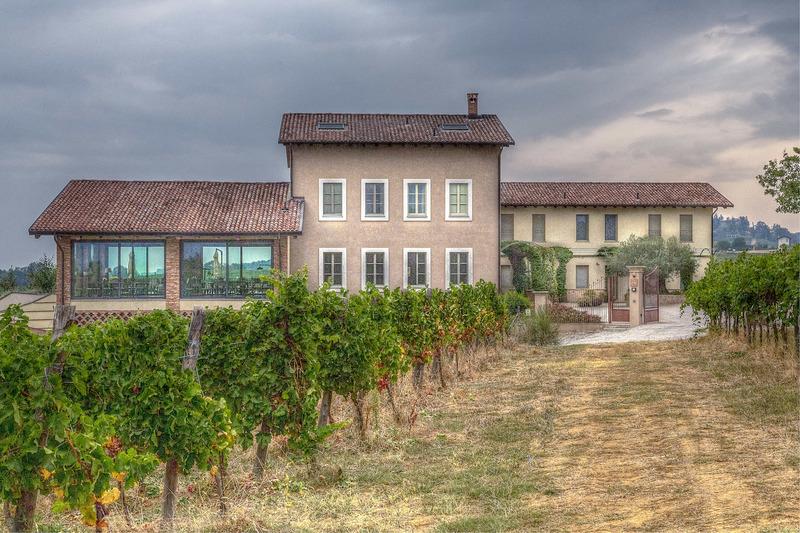- Wine Color/Type
- Top Occasions
- Unique Wines
- Surprise Me!
No Wimps, Just Fine Wine - Three Amazing Wine Brand Stories
The world of wine is a vast expanse of thousands of brands and labels, ranging from multinational corporations to quaint family-owned wineries, and from high-end investors who view wine as a valuable asset to winemaking cooperatives who support the economy of a whole agricultural region.
What's fascinating is that, regardless of their ownership, some wines have incredibly unique stories behind them. In this article, we delve into three of our favorite tales from the wine world, shedding light on some famous wines that you might not have heard of—solely because of the intriguing stories behind them.
Good wines, good times. (Mirko Vitali/stock.adobe.com)
No Wimpy Wines!
The winemaker of Ravenswood, Joel Peterson, stands out in the world of viticulture for a reason you might not expect: he is likely the only winemaker who proudly displays a tombstone at the entrance of his driveway. The inscription reads: "To Err is Human, But to Zin is Divine, Here Lies The Last Wimpy Wine. R.I.P.”
This unusual monument commemorates a ceremony held many years ago, complete with bagpipers and a coffin containing what was referred to as a "wimpy wine," signifying the sweet, uninspiring Zinfandels of the past. This event symbolized a farewell to that era and welcomed a new age of Californian High-End Zinfandel.
At first glance, this might seem rather peculiar. Joel Peterson is renowned as one of the most unconventional winemakers in the region, with a wine-making journey that dates back to 1972. He is known for pushing the boundaries, and today, Ravenswood produces what is considered among the finest Zinfandels in California.
[insert:wine:ravenswood-teldeschi-vineyard-zinfandel-2013]
Peterson's dedication to excellence and his unique approach to winemaking have not only set a high standard for Zinfandel production but also added a fascinating chapter to the rich history of Californian wines. Through his efforts, Ravenswood has turned what was once dubbed "wimpy" into a wine celebrated for its robust character and divine taste, embodying the spirit of innovation and resilience that defines the best of the wine world.
Somebody doesn’t like sweet wines. (Photo: Sonoma Index Tribune)
The Bordeaux Cru Classé of the U.S.
In 1976, an event that would forever change the perception of American wines took place. English wine merchant Steven Spurrier organized a tasting in Paris, dubbed the "Judgment of Paris," which was the first of its kind. The goal was to compare American Bordeaux-style wines with their esteemed French counterparts. This tasting assembled eleven jurors, including French government officials and respected wine-journalists, to taste some of the best wines from each region.
Among the participants, Stag's Leap, a name that has since become synonymous with high-quality wine and now belongs to the Antinori Group, was notable for fetching extraordinary prices. However, it was the forward-thinking Ridge Vineyards in Lytton Springs, California, with their prestigious cuvée "Monte Bello," that initially stole the show by narrowly trailing behind Stag's Leap and just 0.05 points above Mouton-Rothschild, making it a close call with a score of 12.14 points to Stag's Leap's 14.14.
[insert:wine:ridge-vineyards-monte-bello-2020]
The then-outrageous tasting was repeated over and over, resulting in the US consistently winning and giving rise to the term "Bordeaux bashing." The tables turned dramatically in 2006 during a 30-year reenactment of the original tasting. Using the same vintages, Ridge Vineyard's 1971 "Monte Bello" triumphed, scoring points higher than Stag's Leap and significantly outperforming the first French winery, Mouton-Rothschild, which came in fifth with 105 marks. This astonishing result cemented Ridge Vineyards' position in the wine world.
However, Ridge is not only famous for its high-quality wines. The majority of wine lovers appreciate their wines due to their commitment to sustainability, spontaneous fermentations, low-intervention winemaking, and transparent labeling of ingredients and additives.
Aircrafts, Technology, Vacation, and Fine Wine
In the lesser-known region of Oltrepo Pavese, Italy, lies the winery Prime Alture, owned by a retired entrepreneur whose business once supplied spare parts for space and aircraft. This owner has transformed his passion for wine into a beautiful resort featuring a state-of-the-art garage winery, inviting wine lovers and wine travelers alike.
Prime Alture focuses on Burgundian-style Pinot Noir and Cahrdonnay, reflecting its significance with vast plantings that rank it as the third most planted grape variety in acreage internationally. The resort offers a wine club, tastings, and, most importantly, a relaxing vacation surrounded by picturesque vineyards, the quintessential Italian atmosphere with castles, and a large swimming pool.
Despite producing a modest volume of about 40,000 bottles per year, the boutique wines of Prime Alture are rarely exported outside the region. This exclusivity makes Prime Alture a prestigious vacation destination and a haven for those seeking exceptional wines, fine dining, and the tranquil beauty of Italian vineyards.
Surrounded by vineyards, castles and beautiful landscapes in the day. Great wine, great food in the evening. Prima Alture has it all. (Photo: Jonathan P May)
Not all wineries gain fame or receive international acclaim. Much like any business, the decisions ultimately rest in the hands of the owners, who may choose paths less trodden, steering off the conventional grid. This willingness to embrace unconventional approaches and explore unique practices in viticulture and winemaking not only sets them apart but also imbues them with a distinct charm.
Such wineries often cultivate a niche following, attracting enthusiasts and connoisseurs alike who are in search of something genuinely unique and reflective of the winemakers' personal vision and commitment to their craft. This exceptional uniqueness becomes their signature, marking their presence in the vast world of wines with a distinct and memorable identity. This is why we love wine.
Peter Douglas
Latest articles



